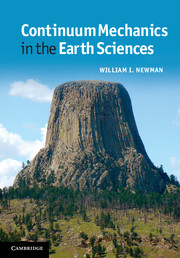Book contents
8 - Computation in continuum mechanics
Published online by Cambridge University Press: 05 June 2012
Summary
Most of this book, in its pursuit of studying continuum mechanics, focused on linearized problems and their decomposition into relatively simple superpositions of solutions. Real-world problems, in contrast, are much more complicated. The calculation of exact solutions to linearized problems in the face of complicated geometries very often can become computationally intensive. Further, realistic problems often introduce substantial nonlinearity – this is especially true in applications involving fluids – rendering such calculations inaccurate, if not incorrect. Moreover, the application of computational methods, however, is not trivial. Computer arithmetic, unlike computer algebra such as that performed by Mathematica and Maple, is executed with a finite number of digits of accuracy (Higham, 2002). Typically, there are 16 digits in double precision arithmetic in programming languages such as C++ and FORTRAN 95, but as great as 25 in MATLAB. Continuum mechanical problems involving matrices, particularly those of large rank, can lose many digits of accuracy due to ill-conditioned matrices. Adding to the arithmetic limitations of computers, the more common tasks of solving nonlinear ordinary and, especially, partial differential equations of continuum mechanics present a formidable issue. The operative differential equations were formulated in the mathematical limit of certain differential quantities going to zero, i.e. infinitesimal quantities that emerge in the evaluation of derivatives. Computers, on the other hand, only work in the realm of the finite quantities.
Information
- Type
- Chapter
- Information
- Continuum Mechanics in the Earth Sciences , pp. 147 - 158Publisher: Cambridge University PressPrint publication year: 2012
